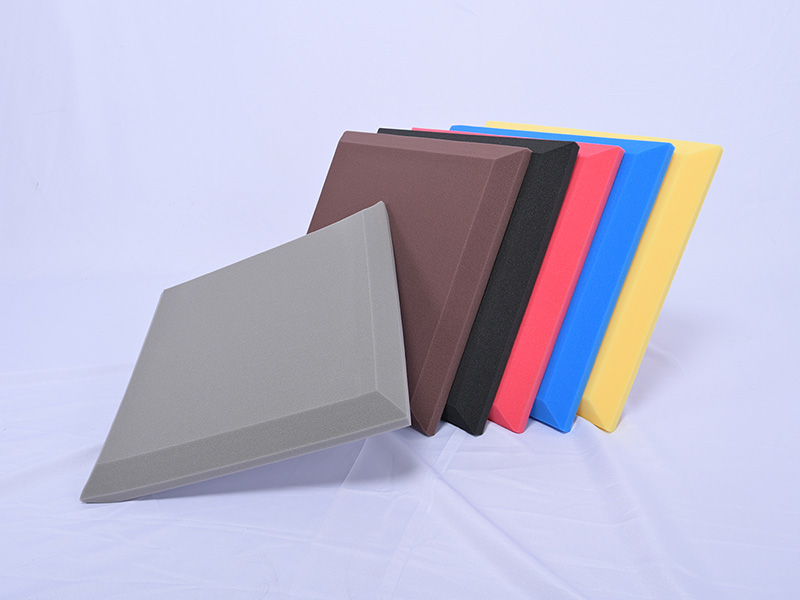Understanding the Polyurethane Foam Manufacturing Process: A Step-by-Step Guide
Explore the polyurethane foam manufacturing process with FUNAS' comprehensive step-by-step guide. Delve into the intricacies of producing versatile, high-quality foam materials used across industries. Gain insights into efficient practices and advanced techniques that define our commitment to excellence and sustainability. Discover how FUNAS leads the way in innovative foam solutions, tailored to meet diverse application needs.
- Preface
- What is Polyurethane Foam?
- Step-by-Step Polyurethane Foam Manufacturing Process
- Raw Materials Used in Polyurethane Foam Production
- Mixing and Reaction of Chemicals
- Expanding Foam
- Curing and Molding the Foam
- Final Product and Quality Control
- Different Types of Polyurethane Foam
- How to Choose Polyurethane Foam for Different Needs?
- FUNAS Insulation: Leading Polyurethane Foam Manufacturer in China
- Conclusion
- FAQs about the Foam Manufacturing Process
Preface
What is Polyurethane Foam?

Step-by-Step Polyurethane Foam Manufacturing Process

Raw Materials Used in Polyurethane Foam Production
Mixing and Reaction of Chemicals
Expanding Foam
Curing and Molding the Foam
Final Product and Quality Control
Different Types of Polyurethane Foam
| Type of Foam | Characteristics | Applications |
| Flexible Foam | Soft, flexible, low-density foam. | Upholstery, mattresses, packaging, automotive seat cushions. |
| Rigid Foam | High-density, sturdy, excellent insulation. | Insulation in buildings, refrigeration units, pipe insulation, automotive parts. |
| Semi-Rigid Foam | Offers a balance between flexibility and rigidity. | Insulation in automotive parts, gaskets, seals. |
|
Spray Foam |
Applied as a liquid, expands into foam. |
Building insulation, roofing, air-sealing. |
| High Resilience Foam | High elasticity, quick recovery. | High-end mattresses, seat cushions, medical cushions. |
How to Choose Polyurethane Foam for Different Needs?
-
Density: affects the strength and durability of the foam. Higher-density foams are more rigid and durable, making them suitable for insulation or structural applications, while lower-density foams are better for cushioning or flexible uses.
-
Flexibility: defines the ability of the foam to bear pressure and regain its shape. Conventional flexible foams have relatively high elasticity and are suitable for cushioning applications such as furniture and automobile seats.
-
Thermal Insulation Properties: Especially important for uses where it is necessary to save energy, for example in construction, insulation, or refrigeration equipment. Low thermal conductivity rigid foam is suitable for these uses.
-
Acoustic Performance: Of particular relevance to soundproofing functions. The foams with small and closely packed cells have good sound absorption characteristics and are therefore suitable for use in walls, floors, and other sound-vulnerable applications.
-
Customization Requirements: There are also some applications where foam will have specific surface treatment (e.g., fire-resistant or water-proof). One should then ask whether these additional features are needed depending on the conditions where the foam is going to be used.
-
FUNAS Insulation: Leading Polyurethane Foam Manufacturer in China
Conclusion
FAQs about the Foam Manufacturing Process

Ultimate 2026 Guide to Car Noise Insulation: Silence Your Ride

Ultimate Guide to Rubber Sheets: How to Choose in 2026

Ultimate Guide to Glass Wool: Properties, Uses & Benefits

The Ultimate Guide to Glass Wool Insulation 2026
FAQ
Can your insulation products be customized?
Yes, we offer customized solutions for insulation material wholesale to meet the specifications of your project, including custom specifications, sizes, foils and adhesives, colors, etc.
What types of rubber foam insulation do you offer?
We offer a wide range of rubber foam insulation with different thicknesses and specifications. Thermal insulation material manufacturer FUNAS sleeves and sheets are suitable for different application scenarios.
What is the typical delivery time for custom orders?
Our daily production capacity is 800 cubic meters. Delivery time varies depending on the complexity of the insulation material wholesale order, but we can deliver large quantities of customized products within 4-6 weeks after the approval date, and small quantities can be delivered within 15 days.
How to start a consultation?
You can contact us through our website, phone, or email. We will arrange a professional staff to discuss your needs about best thermal insulator and how we can help you.
You might also like

Wholesale High-Density Acoustic Foam Sound-absorbing Sponge Soundproof Cotton
Enhance sound clarity and reduce noise with FUNAS Wholesale High-Density Acoustic Foam Sound-absorbing Sponge. Polyurethane sponge is a low density PU with foam density less than 18 kg/m3. This premium soundproof cotton delivers superior sound absorption, perfect for studios, offices, and home theaters. Optimize your acoustic environment now!
Leave a message
Have any questions or concerns about our products? Please leave us a message here and our team will get back to you promptly.
Your queries, ideas, and collaboration opportunities are just a click away. Let’s start a conversation.


















































